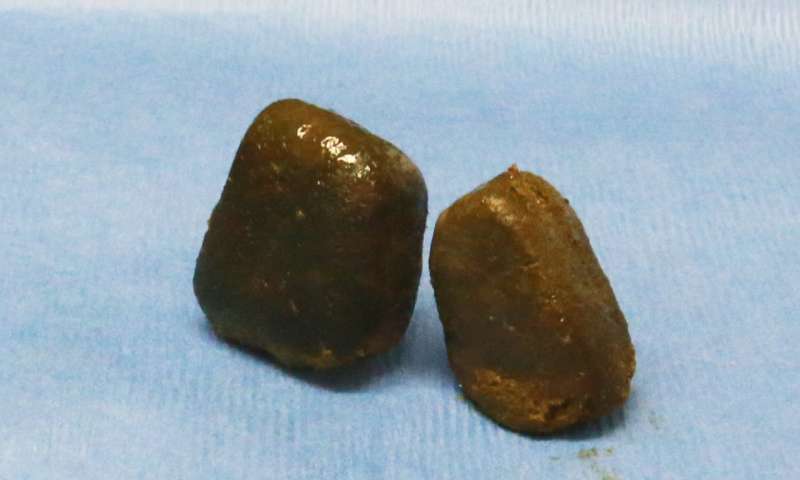Scientists Finally Know How Wombat Butts Make Cube-Shaped Poops

How talented is your anus? Probably not as talented as a wombat's. That cuddly Australian marsupial's rear end has a mysterious and magical ability: It makes cubic poops. And now scientists think they know how.
Cubed wombat poop is one of those wonders of the animal kingdom, like the giant body of the blue whale or the superfast punch of the mantis shrimp, that seems like it shouldn't work on a basic physical level. There's a reason poops are usually spheres or tapered cylinders: Try squeezing a cube out of a tube of toothpaste. Round chutes and round holes like to produce round things.
But in new research presented at the 71st Annual Meeting of the APS Division of Fluid Dynamics on Nov. 18,a team of researchers led by Patricia Yang of the Georgia Institute of Technology said that they've figured it out. [Facts About Wombats]
Feces travel through most of the wombat intestine as liquid slurry, but they dry up into a solid for the last 8 percent of the journey. And that's when the cubic magic happens.
"By emptying the intestine and inflating it with a long balloon, we found that the local strain varies from 20 percent at the cube's corners to 75 percent at its edges," the researchers wrote.
In other words, the intestine is more elastic in some places than others, so it pushes down on its contents harder in some places than in others, creating the little blocks. According to Yang, it's a whole new, previously unknown method for making cubes.
"We currently have only two methods to manufacture cubes: We mold it, or we cut it. Now, we have this third method," she said in a statement. "It would be a cool method to apply to the manufacturing process — how to make a cube with soft tissue instead of just molding it."
Get the world’s most fascinating discoveries delivered straight to your inbox.
Wombats go through all this effort for a reason, the statement said. They don't see or hear very well, so they stack their poops in important places to guide themselves around and to signal their presence to other wombats. A big pile of cubic poops is the wombat equivalent of a "Hello, there."
They just had to invent an all-new method of cube production to pull it off.
- Creative Creatures: 10 Animals That Use Tools
- 5 Things Your Poop Says About Your Health
- Animal Sex: 7 Tales of Naughty Acts in the Wild
Originally published on Live Science.




